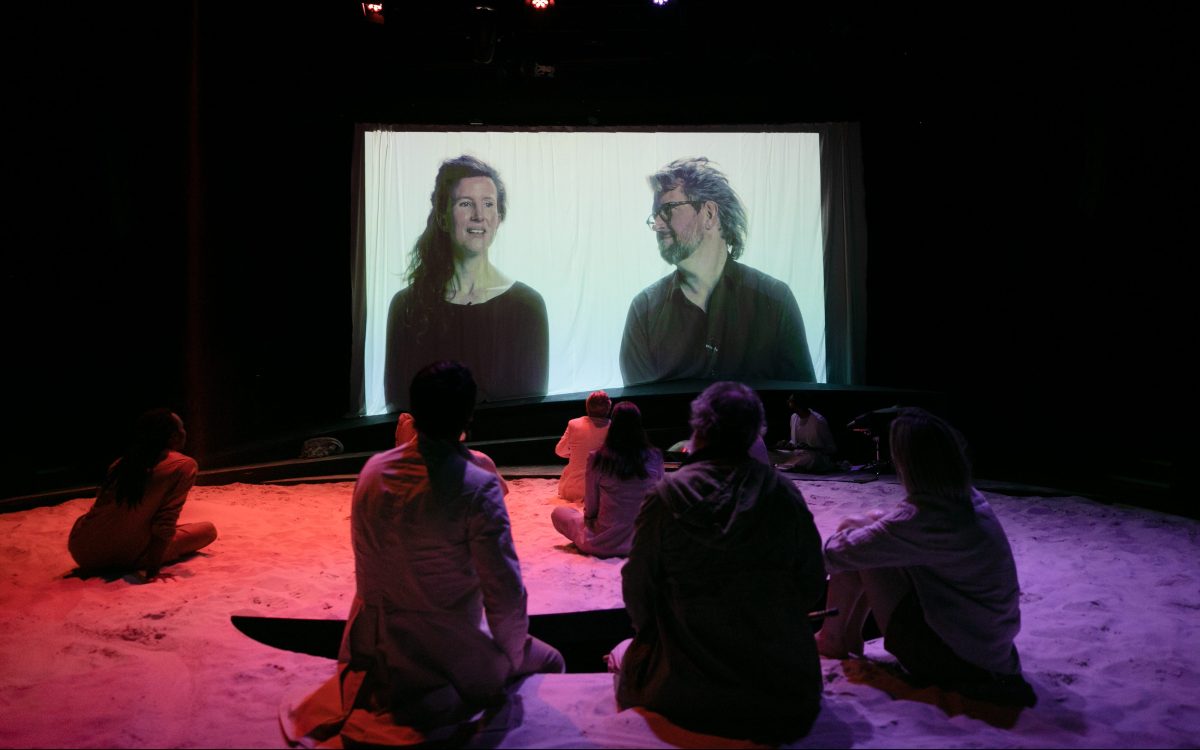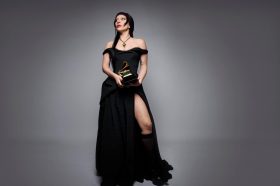Oftentimes the ’magic’ of theatre is its ephemerality, the experience of being in the moment, and in the collective memories you share with fellow audience members, whether they be family, friends or strangers.
But for theatremakers, this ephemerality can mean that studying the artform becomes very subjective, especially for those wanting to delve into the independent sector.
Hugo Williams, a member of the experimental collective Pony Cam, said this is an experience he has often run into when thinking about the legacy of theatre and how emerging makers can engage with it.
WIlliams said: ‘There are generations of major players in major theatres but that’s not necessarily representative of the industry. There are a lot of artists who have been doing work for a long time at an independent level, who are successful in their own territory and there’s something to be learned there.
‘There is something we can take from these artists in their methodology and process, especially for young artists. But the problem is, there aren’t many who have the ability to have a really detailed exchange between different generations of independent artists.’
Read: Grand Theft Theatre: An unreliable memoir
But digital documentation of theatre has begun to change our ability to access and engage with its legacy, both with major productions and at the independent level.
Williams’s approach is to ask artists he admires, or who are working with similar ideas to those he is interested in, for digital copies of their work, as well as previous scripts and rehearsal notes which reveal more about the creative process than a recording of the final product.
‘A lot of artists have digital records now online and the quality might not be great but you can to see just a little bit of where things originated. And that’s so important given how ephemeral theatre is,’ said Williams.
I’m encouraging all of my peers to document, document, document.
Jessica Russell
Jessica Russell, a freelance videographer and broadcast director in WA’s performing arts scene, shares a similar view on documentation.
‘I’m really encouraging emerging makers to document their work, even if that’s just on a phone in a dress run,’ Russell told ArtsHub. ‘A full-length archival copy is such an under-appreciated tool when you want to revisit a work thematically and explore what you put on stage.’
That kind of archiving is growing trend, Russell noted, partly ’driven by our funding bodies, who are encouraging more and more documentation and proof of the validity of these projects, whereas it used to be a bit more dependent on our grant writing skills.
‘I’ve got more to show for my work in the part three years of working in film than I do for about 12 years in theatre and that just blows my mind,’ said Russell.
From collective memory to hard drives: theatre through a lens
In Russell’s experience, finding a balance between theatre and film is crucial to better serving the artform in a broadcasting and documentation capacity.
‘The beauty of the camera in a filmic sense is you have complete creative control over what’s in the frame … But from a theatre perspective, what’s interesting is that you relinquish that control to look at a broader stroke of story on a larger scale,’ she said.
‘I think if you try and become too filmic and stylised with that broadcast and capturing with multicam, it loses the essence – that ephemeral quality of live theatre.’
Russell continued: ‘It’s completely about getting your audience’s desire for engagement and being at their disposal as to what they want to hone in on and what they recall. So that’s quite a conscious decision in my mind when I go into these spaces – how is my camera best serving this work?’
Read: Digital performing arts – not just for COVID, but the future
On the other hand, Williams cautioned that it’s important to be aware of how live-streams and recording documentation reinforces existing hierarchies. ‘In the past five to 10 years, those who have the most money are the ones who can film things in really high fidelity and in a really great way. But they’re not necessarily the works I want to be watching as a young artist coming into a community.
‘So I think it’s a really dangerous territory to get into trying to find data solely via the digital. Asking artists for their documentation – even though it’s not as entertaining or made with the same budget – can be a much better resource.’
Another consideration is greater access in digital documentation and live-streamed theatre. While not many can afford to tour productions regionally or overseas, Russell said, ’if we can invest maybe a fifth of that money into capturing high-quality multicam broadcasts, then we can hold screenings in those centres and towns and send members of the artistic teams for Q&As. That might be a bit more manageable within our current funding structures.’
Of course, theatres are also working with video and film elements in a creative capacity, notably Sydney Theatre Company’s The Picture of Dorian Gray (‘an explosion of the boundary between film and theatre,’ said Russell) and Black Swan’s The Tempest, in which Russell worked as video designer.
Working together with the directors, Russell added a video element into the production, which involved interviewing audiences pre-show on their love and long-term relationships. These were then handpicked and projected onto the stage.
‘It was really this wonderful gift to the audience and reframed the Shakespearean text in the context of modern love and what that looks like,’ said Russell on bringing a vox pop/documentary element to the live stage.
There are also other ways in which technology such as 3D modelling has begun to shift the creative process of theatremakers, such as a recently unveiled virtual theatre space to 1:1 scale by iCinema, UNSW, which allows users to fine-tune their production designs in real time.
Russell continued: ’The sort of digital ”encroachment” on theatre is usually framed in a negative light, people are somewhat sceptical and thinking ”will we lose the purest sense of theatre if we allow this digital space to encroach on it?”
‘But I think at the end of the day, it’s all about serving our story,’ she concluded.




